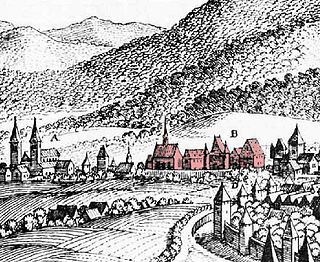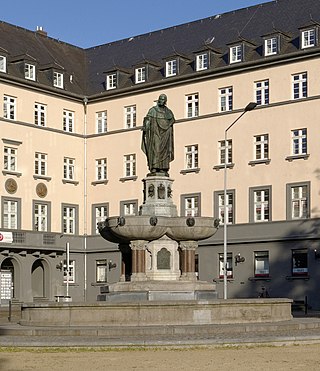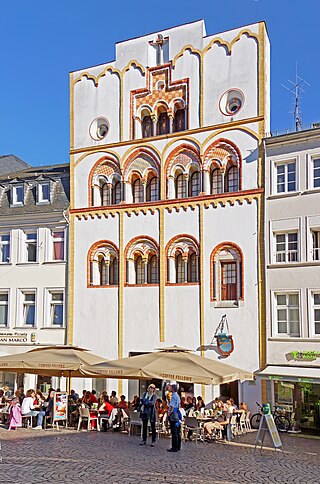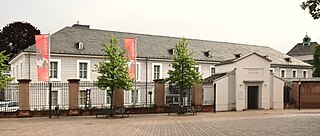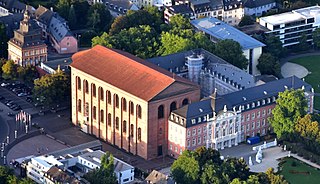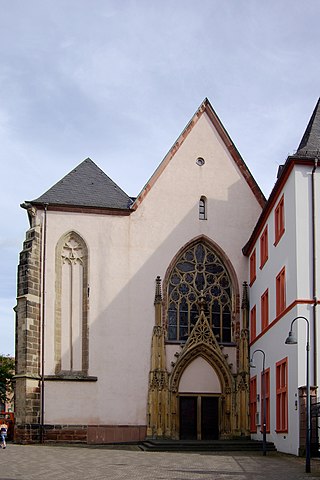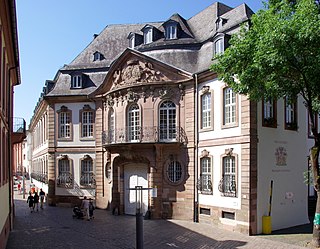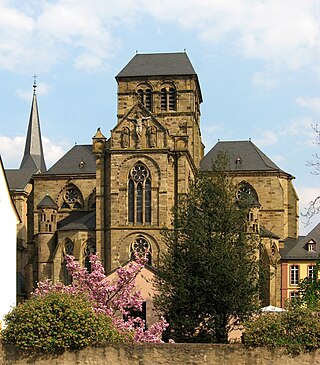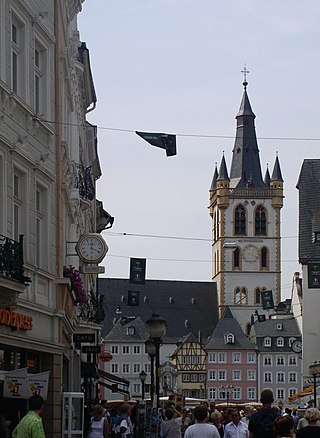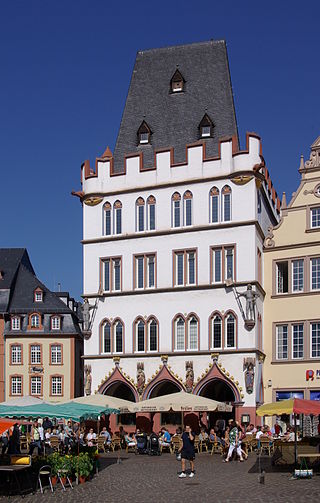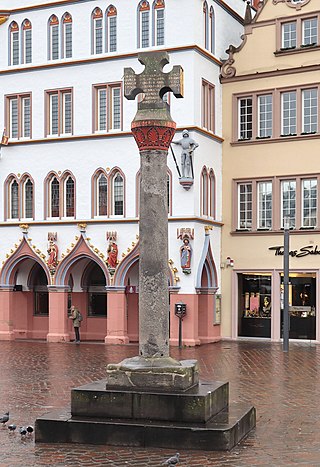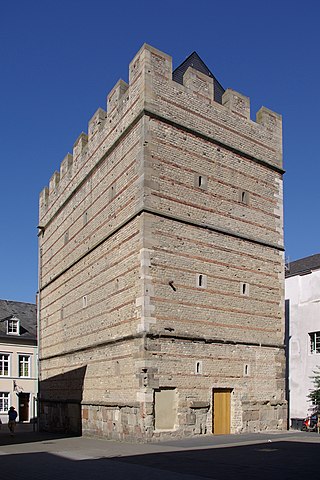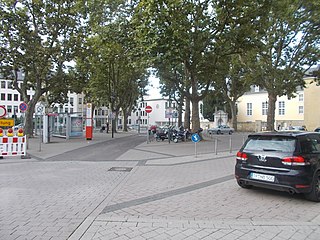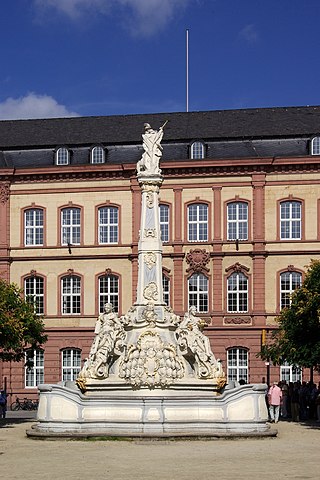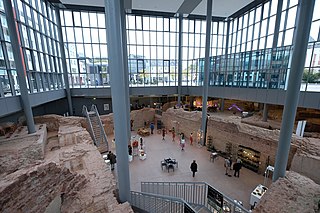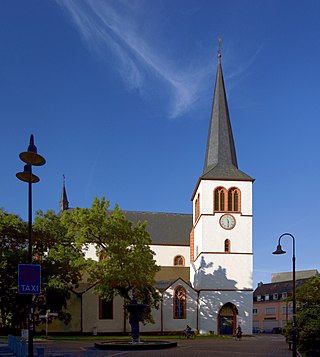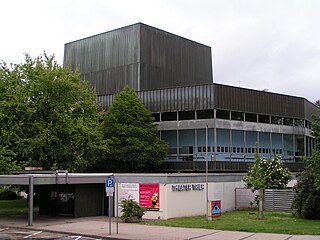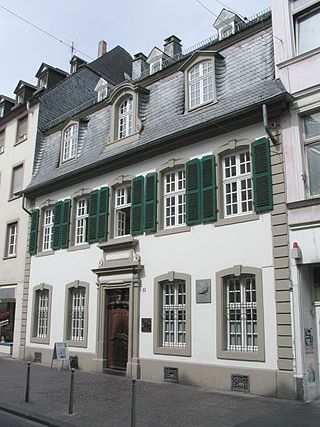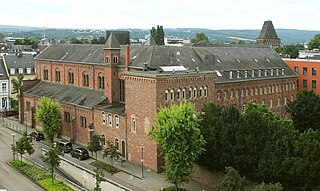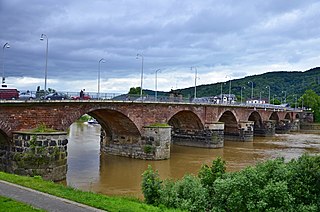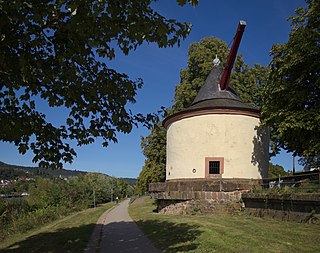Self-guided Sightseeing Tour #2 in Trier, Germany
Legend
Tour Facts
7.5 km
101 m
Experience Trier in Germany in a whole new way with our free self-guided sightseeing tour. This site not only offers you practical information and insider tips, but also a rich variety of activities and sights you shouldn't miss. Whether you love art and culture, want to explore historical sites or simply want to experience the vibrant atmosphere of a lively city - you'll find everything you need for your personal adventure here.
Activities in TrierIndividual Sights in TrierSight 1: St. Paulin
Saint Paulinus is a Baroque church in the city of Trier, Germany. Constructed between 1734 and 1753, the interior was designed by Johann Balthasar Neumann. The ceiling of the nave features a painting by the artist Christoph Thomas Scheffler. The tomb of the saint after whom the church is named, Paulinus of Trier, is located in the church's crypt.
Sight 2: Ehemalige Abtei Sankt Maximin
St. Maximin's Abbey was a Benedictine monastery in Trier in the Rhineland-Palatinate, Germany.
Sight 3: Balduinbrunnen
The Balduinbrunnen is a fountain in the Rhineland-Palatinate city of Trier (Mosel) at the beginning of Balduinstraße in the Mitte district. The fountain is a monument in memory of Baldwin of Luxembourg, who was Archbishop of Trier from 1307 to 1354 and one of the electors in the Holy Roman Empire of the German Nation. It is a dominant building in terms of urban development, whose location at the intersection of Christophstraße and Balduinstraße in the northeast of the Alleenring was originally intended for the Kaiser Wilhelm Monument, which was erected on 15 May 1893 on the Domfreihof. The distance of the fountain to Trier Central Station is about 200 meters.
Sight 4: Welschnonnenkirche
The Welschnonnenkirche in Flanderstraße in Trier is a Baroque church that was built in 1714–1716 by the Augustinian choristers B.M.V. for the Trier Welschnonnenkloster. It is dedicated to the Assumption of Mary.
Sight 5: Kapelle ad Quercum
Sieh um Dich is a short alley in Trier's city center not far from Trier Cathedral within the Domimmunität, which connects the Domfreihof with Rindertanzstraße. Together with the southern section of Liebfrauenstraße, it follows a Roman cardo. At the latest since the construction of the gatehouse of today's cathedral provost's office around the middle of the 17th century, the alley, flanked by high curial walls, leads almost at right angles to the cathedral courtyard.
Sight 6: Dreikönigenhaus
Get Ticket*The Dreikönigenhaus in Simeonstraße in Trier, not far from the Porta Nigra, is a patrician house in the form of an early Gothic residential tower. The name comes from the time around 1680, when Johann Cornet ran the inn "Zu den drei Königen" there. Originally, the house was called "Zum Säulchen", with reference to the crowning column in the gable and the elaborate marble columns of the windows.
Sight 7: Dom St. Peter zu Trier
The High Cathedral of Saint Peter in Trier, or Trier Cathedral, is a Roman Catholic cathedral in Trier, Rhineland-Palatinate, Germany. It is the oldest cathedral in Germany and the largest religious structure in Trier, notable for its long life span and grand design. The central part of the nave was built of Roman brick in the early fourth century, resulting in a cathedral that was added onto gradually in different eras. The imposing Romanesque westwork, with four towers and an additional apse, has been copied repeatedly. The Trier Cathedral Treasury contains an important collection of Christian art. In 1986 the church was listed as a UNESCO World Heritage Site, as part of the Roman Monuments, Cathedral of St. Peter and Church of Our Lady in Trier.
Sight 8: Museum am Dom
The Museum am Dom Trier is a museum of the Diocese of Trier, which has the task of researching the cultural and piety history of the Diocese of Trier and making it accessible to the public. In addition, the museum researches the late antique predecessor buildings of Trier Cathedral, the oldest German episcopal church.
Sight 9: Electoral Palace
Get Ticket*The Electoral Palace in Trier, Germany, was the residence of the Archbishops and Electors of Trier from the 16th century until the late 18th century. It now houses various offices of the federal government and often hosts classical music concerts.
Sight 10: Konstantinbasilika
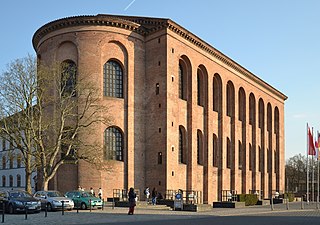
The Aula Palatina, also called Basilica of Constantine, at Trier, Germany, is a Roman palace basilica and an early Christian structure built between AD 300 and 310 during the reigns of Constantius Chlorus and Constantine the Great.
Sight 11: Jesuitenkirche
The Jesuit Church in Trier is a former monastery church of the Franciscans from the 1st half of the 13th century. It is dedicated to the Holy Trinity.
Sight 12: Palais Kesselstatt
The Palais Kesselstatt is a cultural monument in the Liebfrauenstraße in Trier in Rhineland-Palatinate.
Sight 13: Liebfrauenkirche
Get Ticket*The Liebfrauenkirche in Trier, is, according to UNESCO, "the earliest church built in French High Gothic style outside France." It is designated as part of the Roman Monuments, Cathedral of St Peter and Church of Our Lady in Trier UNESCO World Heritage Site. The Trier Dom (cathedral) is next to it, and the two buildings share a common wall.
Wikipedia: Liebfrauenkirche, Trier (EN), Service_times Url, Opening Hours, Heritage Website
Sight 14: Petrusbrunnen
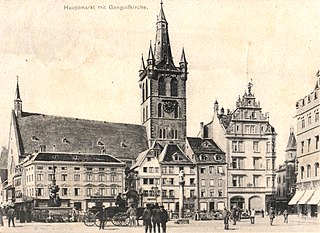
Trier's main market square is the central and one of the largest squares in the city.
Sight 15: St. Gangolf
Get Ticket*St. Gangolf's Church is a Roman Catholic church in Trier, Germany. It is dedicated to St. Gangulphus. After Trier Cathedral, it is the second oldest church building in the city.
Sight 16: Steipe
The Steipe is a reconstructed Gothic building on the main market square in Trier.
Sight 17: Marktkreuz
Get Ticket*The market cross on Trier's main market square was erected around 958 by order of the Trier Archbishop Heinrich I.
Sight 18: Rotes Haus
The Red House is located in Dietrichstraße on the market square in Trier. The house was built in 1684 by the master builder Wolfgang Stuppeler for the cathedral secretary Johann Wilhelm Polch. After its destruction in the Second World War on 21 December 1944, the house was rebuilt between 1968 and 1970. There is currently a café in the house. On the front of the house you will find the inscription:ANTE ROMAM TREVIRIS STETIT ANNIS MILLE TRECENTIS. PERSTET ET ÆTERNA PACE FRVATVR. AMEN.
Sight 19: Spielzeugmuseum
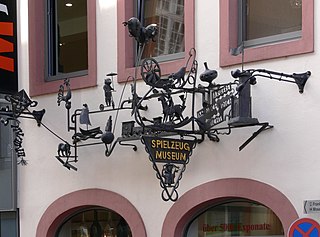
The Trier Toy Museum was opened in May 1989 by toy collector Rolf Scheurich and his wife Heidi Scheurich, a doll collector, initially in Nagelstraße in Trier. At the time, it was the largest privately run museum of its kind in Germany. It remained in Scheurich's possession until its sale in 2000; since then, it has been run by the association of the same name, which was founded specifically for preservation. In October 2003, it moved to the "Steipe", a historic building on Trier's main market.
Sight 20: Frankenturm
The Frankenturm is a fortified residential tower in the city of Trier. It is located in Dietrichstraße near the main market square in the center of the city.
Sight 21: Trebeta-Brunnen
Nikolaus-Koch-Platz is one of the central squares in Trier's city centre.
Sight 22: Sankt Georgsbrunnen
The Georgsbrunnen is a fountain in the Mitte/Gartenfeld district of Trier, Germany. It is considered one of the most beautiful rococo fountains in Germany.
Sight 23: Thermen am Viehmarkt
49.752736°N 6.63766°E The Forum Baths of Trier are a ruin of a Roman bath complex in Augusta Treverorum, modern-day Trier, Germany. The baths were discovered in 1987.
Sight 24: St. Antonius
St. Antonius is a Roman Catholic church in Trier, Germany. It is located in the Mitte district on Antoniusstraße near the Viehmarkt and belongs to the parish of Liebfrauen in the Diocese of Trier.
Sight 25: Theater Trier
The Theater Trier is the municipal theatre of Trier, Rhineland-Palatinate, offering opera and musical, dance and drama. The company dates back to 1802. The current house was completed in 1964, and needs renovation. The director since 2018 is Manfred Rolf Langner.
Sight 26: Karl-Marx-Haus
Get Ticket*The Karl Marx House museum is a biographical and writer's house museum in Trier. In 1818, Karl Marx, the father of Marxism, which influenced both modern socialism and communism, was born in the house. It is now a museum about Karl Marx's life and writings as well as the communism and socialism.
Sight 27: St. Josef
The former Redemptorist monastery of Sankt Josef is a monastery building with an associated three-aisled church in Trier, Feldstraße 18, built in 1854–55, three-storey complex in neo-Romanesque style made of red sandstone.
Sight 28: Römerbrücke
Get Ticket*The Roman Bridge is an ancient structure in Trier, Germany, over the Moselle. It is the oldest standing bridge in the country, and the oldest Roman bridge north of the Alps. The nine bridge pillars date from the 2nd century AD, replacing two older, wooden bridges that date at least as far back as 17 BC. In Roman times, tossing a coin off of the bridge into the Moselle was an offering of good luck. The upper part was renewed twice, in the early 12th and in the early 18th century, after suffering destruction in war. Along with other Roman and Early Gothic sites in Trier, the bridge was inscribed on the UNESCO World Heritage List in 1986 because of its historical importance and architecture.
Sight 29: Jüngerer Moselkran
The customs crane, also known as the Old Customs Crane or the Younger Moselle Crane, is a harbour crane in Trier. The baroque stone building with double cantilevers stands on the right bank of the Moselle near the main customs office.
Share
How likely are you to recommend us?
Disclaimer Please be aware of your surroundings and do not enter private property. We are not liable for any damages that occur during the tours.
GPX-Download For navigation apps and GPS devices you can download the tour as a GPX file.

